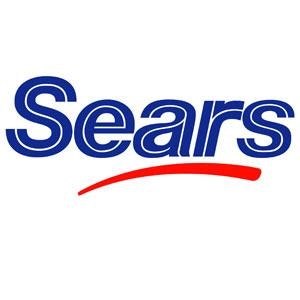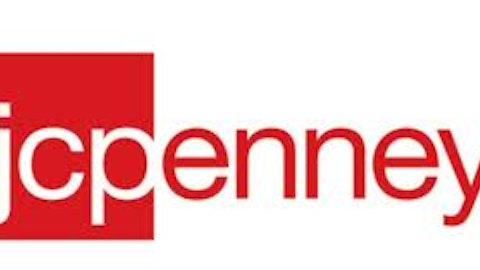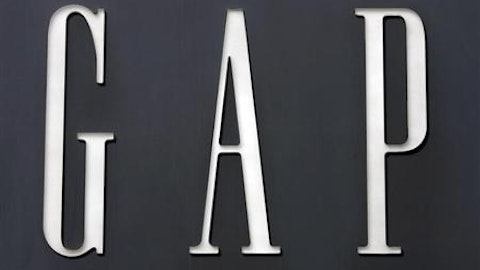After sales dropped and cash dwindled, investors became concerned with J.C. Penney Company, Inc. (NYSE:JCP). Some even speculated that the company could be forced into bankruptcy.
But perhaps there’s another retailer in an even more precarious situation. Shares of Sears Holdings Corporation (NASDAQ:SHLD) plunged May 24 after the company reported an unprofitable quarter. At its current burn rate, the company could run out of cash within a year.
Sears’ recent quarter
To put it bluntly, Sears’ recent quarter was a disaster. On a year-over-year basis, revenue dropped by about 10%, gross margin declined, and the company posted an operating loss of $247 million.
As of May 4, the company had only $481 million of cash, down from $618 million just three months prior. Projecting this out, the company could be expected to run out of money within four quarters.
But that’s probably not likely to happen. Sears Holdings Corporation (NASDAQ:SHLD) insists that it’s working to raise additional capital; specifically, it’s looking to sell off its warranty program (“Sears Protection Agreement”). If successful, that sale could raise $500 million or more.
Sears’ stock dropped about 20% after the report, and shares have yet to recover.
Sears’ appliance exposure
Given the ongoing recovery in US housing, one might’ve expected Sears to perform better in light of its appliance exposure — after all, the company owns the iconic Kenmore brand. Building or remodeling a new house often requires the purchase of new appliances.
But on Sears’ most recent 10K, it blamed declining comparable store sales partly on appliances. Perhaps Sears is losing ground in this category to stores like the The Home Depot, Inc. (NYSE:HD) and Best Buy Co., Inc. (NYSE:BBY).
The other factor to consider is the company’s decision to spin off its Sears Hometown and Outlet Stores Inc (NASDAQ:SHOS) late in 2012. That stock has been a phenomenal performer, having rallied over 80% since it began trading last October.
Included within the Sears Hometown and Outlet Stores Inc (NASDAQ:SHOS) spinoff is the company’s hardware stores, which focus on the sale of appliances and other home-related goods (lawn mowers, etc.).
Compared to its parent, SHOS is a much smaller company, with a market cap of about $1.3 billion to Sears Holdings (NASDAQ:SHLD)’ $5.2 billion.
But if you’re inclined to buy into the housing recovery, SHOS seems like a much better play than Sears Holdings.
Sears vs J.C. Penney
Sears and J.C. Penney Company, Inc. (NYSE:JCP) compete to some extent. The two department stores often anchor the same middle-income shopping malls, and they generally sell similar clothing in terms of quality and price.
But Sears Holdings Corporation (NASDAQ:SHLD) is a much more complex business. Besides its appliances, Sears’ department stores continue to sell tools, electronics, and automotive parts — categories J.C. Penney Company, Inc. (NYSE:JCP) does not compete in.
Additionally, Sears Holdings also includes Kmart — a store that’s more comparable to Wal-Mart Stores, Inc. (NYSE:WMT) or Target Corporation (NYSE:TGT).
But as one department store to another, J.C. Penney’s business seems to be in a better position going forward. Now former CEO Ron Johnson blew through roughly $1 billion on the job, but all that money didn’t go to waste.
J.C. Penney Company, Inc. (NYSE:JCP)’s remodeled stores (particularly the new home goods sections) look amazing. At the same time, while he was at J.C. Penney, Johnson was able to attract exciting new brands like Joe Fresh.
Compare that to Sears Holdings Corporation (NASDAQ:SHLD), whose stores have largely languished. Management has come and gone, and the business itself seems to be drifting aimlessly.
Although both stocks are fairly risky at this point, J.C. Penney at least has some building blocks in place for a turnaround.
Investing in Sears
There’s a common belief held among market participants that Sears Holdings’ CEO (and hedge fund manager) Eddie Lampert only bought into the company as a real estate play. Yet, as venture capitalist Marc Andreessen quipped, perhaps that real estate wasn’t so valuable after all.
Both Sears and J.C. Penney are struggling department stores. Of the two, I think J.C. Penney Company, Inc. (NYSE:JCP) is more attractive, as it at least has some exciting building blocks in place for a turnaround.
Sears Holdings Corporation (NASDAQ:SHLD) might have some value as a play on the US housing recovery, but in that case, investors seem to be better off buying SHOS.
If Sears can return to profitability, the stock could come roaring back, as a company — once left for dead — turns it around. Yet, at this rate, it’s hard to envision such a scenario playing out.
Joe Kurtz owns shares of J.C. Penney Company. The Motley Fool has no position in any of the stocks mentioned.
The article This Retailer Might Be in Worse Shape Than J.C. Penney originally appeared on Fool.com.
Copyright © 1995 – 2013 The Motley Fool, LLC. All rights reserved. The Motley Fool has a disclosure policy.


